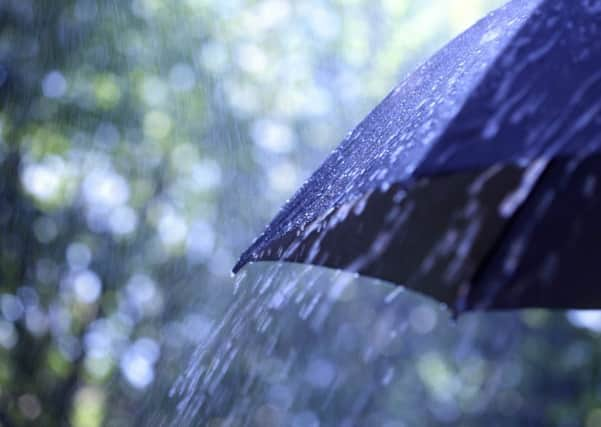Warmest, wettest December on record


It has already been a history making month for rainfall for some parts of the country with devastating flooding across Cumbria, Yorkshire and Lancashire in particular.
And temperatures have also been more than twice as mild as normal.
Advertisement
Hide AdAdvertisement
Hide AdThe warmest places have been Achnagart and Plockton, both in Ross & Cromarty in Scotland, and Teignmouth, Devon, at the other end of the country, where the mercury hit 17.2C (63F) on 17 December
Gravesend was next warmest with 17.1C (62.8F) two days later.
Mowing the lawn has been the reality for some so far this December, with unseasonably high temperatures.
It looks as though the UK is on track to break the record for the warmest December since records began in 1910 and some areas have also seen their wettest.
Advertisement
Hide AdAdvertisement
Hide AdThe latest temperatures for December from 1st to 22nd reveal that the month so far has been far warmer than normal.
Early provisional figures reveal that the mean temperature for December in the UK has so far has been 8.1C (46.6F), which is 4.2C (39.6F) above the long-term average for the month of 3.9C (39F) and well above the previous record of 6.9C (44.4F) set in 1934.
In England the average temperature up to Christmas has so far been 9.5C (49.1F), an incredible 5.1C (41.2F) above the long-term average and 2C (35.6F) above the record of 7.5C (45.5F) set in 1934
The average has been 9.3C (48.7F) in Wales, 4.8C (40.6F) above normal.
Advertisement
Hide AdAdvertisement
Hide AdIn Scotland it has been 5.6C (42F), 2.8C (37F) higher but slightly lower than the previous December record of 5.8C (42.4F) set in 1988.
The average of 7.5C (45.5F) in Northern Ireland is 3C (37.4F) more than average, and marginally above the 1988 record.
Tim Legg of the Met Office National Climate Information Centre said: “With no sign of any significantly cold weather to come in the remaining days of the month, we are on track to break the warmest December record which was set back in 1934.”
This is has already been a record breaking month for rainfall in some parts of the UK, with exceptional amounts falling onto already saturated ground.
Advertisement
Hide AdAdvertisement
Hide AdChristmas Day and Boxing Day saw around 100mm (3.9in) with peaks of 130mm (5.1 in) in Lancashire and in excess of 200mm (7.9in) in Snowdonia, causing flooding across parts of north Wales and northern England.
The Met Office said December has been dull and wet across most of the UK, with sunshine well down on the long-term average.
Record breaking rainfall up to 22 December includes Cumberland (310.9mm (12.2in) beating the 248.2mm (9.8in) set in 2006, Westmorland 474.4mm (18.7in) beating 365.1mm (14.4in) also in 2006, Dumfriesshire 314mm (12.4in) compared to 307.5mm (12.1in) in 2013, Carnarvonshire 441.3mm (17.4in) compared to 376.6mm (14.8in) in 1965 and Roxburghshire 237.8mm (9.4in) with the previous record 219.7mm (8.6in in 2013).
The Met said this December is already the wettest on record in parts of the UK and the current mild weather is affecting our shopping habits during one of the most important shopping periods of the year.
Advertisement
Hide AdAdvertisement
Hide AdWhile we might normally expect sales of hats and scarves, sledges and de-icers to be at a peak in December, the reality this year is that they were unlikely to be top of anyone’s shopping list.
In fact, the statistics halfway through this month showed that for Wales, southwest England and southeast England it has been the mildest start to December using data back to 1960.
Average maximum daily temperature has been 3.2C (37.8F) above what would normally be expected, with daily maximum temperatures in the mid-teens Celsius recorded, when values would normally be hovering around 6 (42.8F) to 7C (44.6F).
Fashion stores have been particularly affected with lower demand for coats and knitwear, while a mild autumn and start to the winter has also impacted food retailers and sales of seasonal soups, winter vegetables and hot drinks.